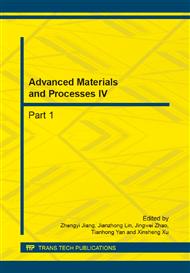p.108
p.116
p.120
p.125
p.129
p.133
p.137
p.141
p.145
Study on Hydrogen Content of Solid Industrial Pure Aluminum
Abstract:
The hydrogen contents of molten aluminum solidifying in various molds were tested by the use of the G4 Phoenix DH and the samples of microstructure were analyzed under the optical microscope (OM). The results show that the hydrogen contents of solid aluminum decreases with the decreasing cooling rate. However, when molten aluminum solidifies in the adiabatic mold, the hydrogen content has a slight increase because of long time of exposure to the air. In addition, the microstructure of casting pure aluminum is refined with increasing cooling rate.
Info:
Periodical:
Pages:
129-132
Citation:
Online since:
September 2014
Authors:
Keywords:
Price:
Сopyright:
© 2014 Trans Tech Publications Ltd. All Rights Reserved
Share:
Citation:


